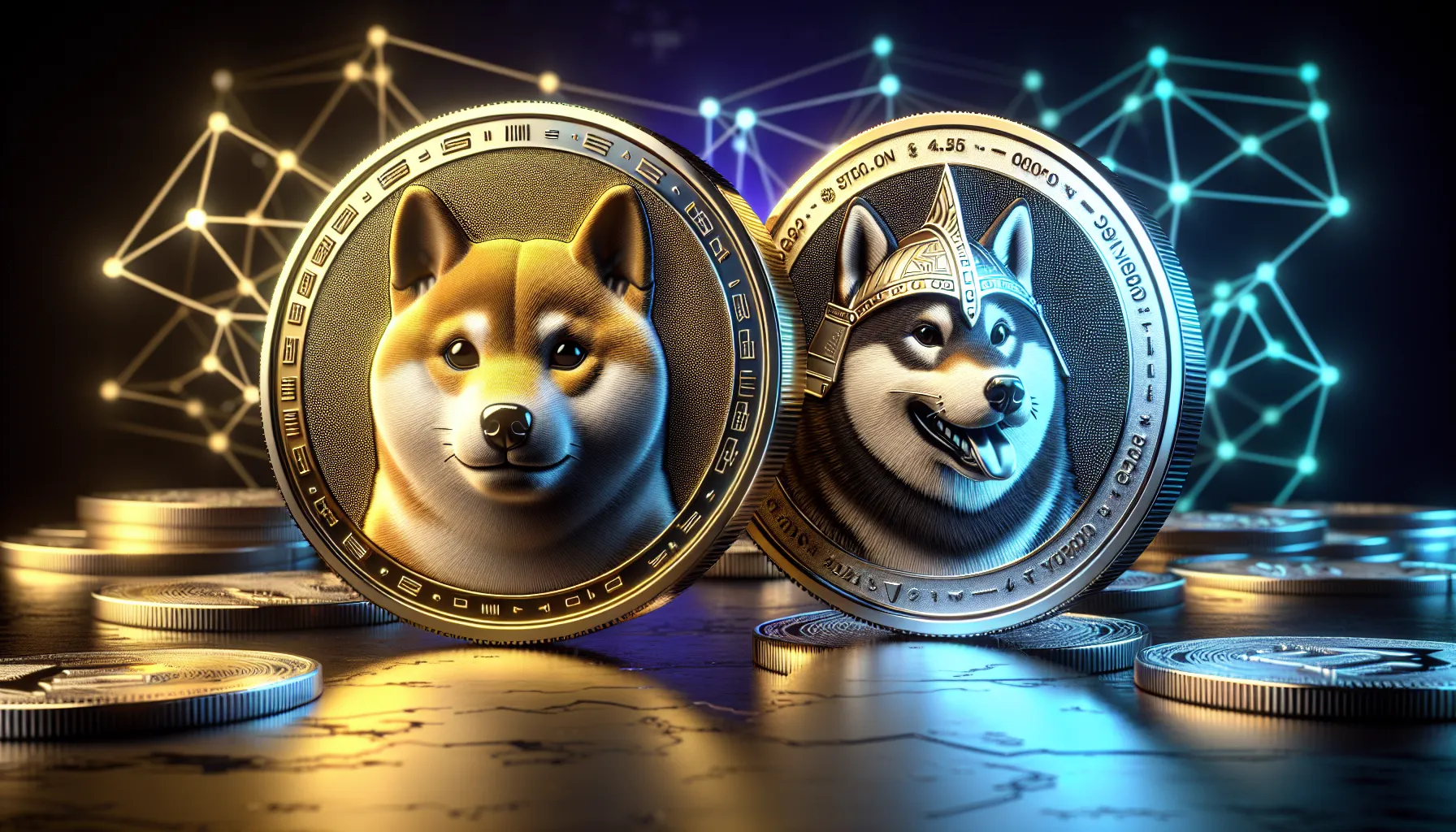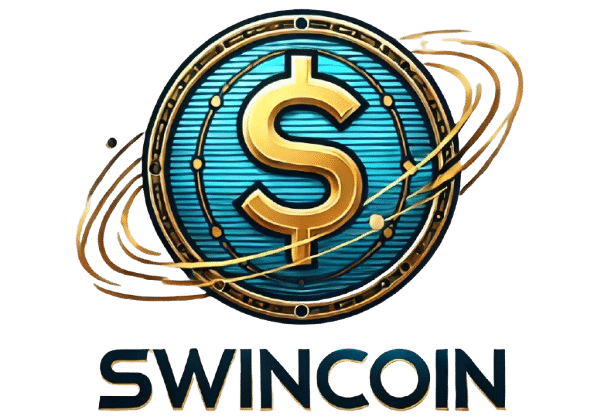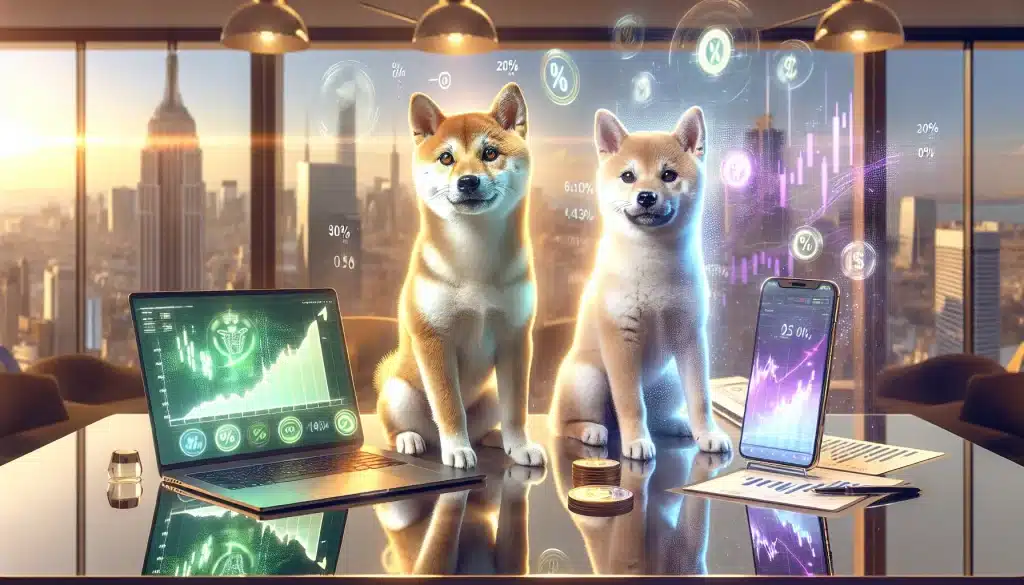You’ve heard the buzz. Two dog-themed tokens are dominating crypto conversations, splitting opinions and commanding billions in market value. Shiba Inu exploded onto the scene first, riding a wave of retail enthusiasm that took even seasoned traders by surprise. Then came Floki Inu, named after Elon Musk’s dog, positioning itself as the next evolution in meme coin culture. But when you’re looking at these two projects with actual money on the line, the question becomes sharper: which one deserves your attention, and more importantly, your capital? This comparison cuts through the hype to examine what really matters, market fundamentals, real utility, community backing, and the risks you need to understand before making your move. Neither of these tokens follows traditional investment logic, and that’s precisely what makes the analysis both challenging and necessary.
Key Takeaways
- Shiba Inu offers greater market stability with a $5-15 billion market cap, broader exchange listings including Coinbase and Robinhood, and a larger established community compared to Floki Inu.
- Floki Inu vs Shiba Inu comes down to risk tolerance: Shiba provides safer exposure with proven staying power, while Floki offers higher potential returns due to its smaller market cap and aggressive marketing strategy.
- Both tokens have developed real utility beyond speculation, with Shiba launching the Shibarium layer-2 blockchain and Floki building the Valhalla play-to-earn metaverse and FlokiFi DeFi ecosystem.
- The Floki Inu vs Shiba Inu comparison reveals extreme volatility in both tokens, with 10-30% daily price swings common and strong correlation to Bitcoin’s movements but with amplified risk.
- Neither token should represent a core portfolio holding—treat them as calculated speculative bets where community sentiment and attention drive value more than traditional fundamentals.
Understanding Meme Coins: The Origins of Floki and Shiba

Meme coins emerged from internet culture, transforming jokes into financial instruments that now move billions of dollars. Unlike Bitcoin or Ethereum, these tokens weren’t built to solve technical problems, they exist because communities decided to give them value. Understanding where Shiba and Floki came from helps you grasp what drives their price movements.
What Is Shiba Inu?
Shiba Inu launched in August 2020 as an experiment in decentralized community building. The anonymous founder, known as “Ryoshi,” created it as a deliberate alternative to Dogecoin, billing it as the “Dogecoin killer.” The token runs on Ethereum’s blockchain as an ERC-20 token, which immediately gave it access to established infrastructure and decentralized exchanges.
What started as a self-described meme token quickly gathered momentum when Vitalik Buterin, Ethereum’s co-founder, received half the total supply and later burned most of it while donating a portion to charity. That single event in May 2021 created scarcity and generated massive media attention. The project has since expanded beyond just the SHIB token to include an entire ecosystem with its own decentralized exchange, NFT platform, and additional tokens.
What Is Floki Inu?
Floki Inu emerged later, in June 2021, directly inspired by Elon Musk’s announcement that he’d name his Shiba Inu puppy “Floki.” Where Shiba positioned itself against Dogecoin, Floki positioned itself as part of a broader movement, “The People’s Cryptocurrency.” The project combined the viral appeal of meme culture with more ambitious utility plans from the start.
Floki operates across both Ethereum and Binance Smart Chain, giving it flexibility that Shiba initially lacked. The team behind Floki has been more visible and marketing-focused than Shiba’s anonymous origins, running aggressive advertising campaigns in major cities and during high-profile events. From the beginning, Floki’s roadmap included gaming, NFTs, and DeFi applications, signaling an intention to become more than just a speculative token.
Market Performance and Price History
Raw numbers tell part of the story. When you’re comparing investment potential, market capitalization and trading activity reveal which token has captured more capital and liquidity.
Shiba Inu Market Cap and Trading Volume
Shiba Inu reached its all-time high in October 2021, when the token briefly cracked into the top ten cryptocurrencies by market cap, hitting roughly $41 billion at its peak. Individual investors who got in early saw returns that multiplied their holdings by thousands of percent. That peak came during a perfect storm of factors: retail FOMO, celebrity mentions, and Robinhood listing speculation.
Since then, like most cryptocurrencies, SHIB has experienced significant drawdowns. Throughout 2023 and into 2024, its market cap has typically ranged between $5 billion and $15 billion, depending on broader market conditions. Trading volume remains substantial, often hundreds of millions daily across major exchanges, which means you can enter and exit positions without dramatically moving the price. That liquidity matters more than many newcomers realize.
The token has shown cyclical behavior that correlates strongly with Bitcoin’s movements but with amplified volatility. When Bitcoin rises, SHIB tends to rise faster. When Bitcoin falls, SHIB typically falls harder. This beta characteristic makes it a high-risk, high-reward play on general crypto market sentiment.
Floki Inu Market Cap and Trading Volume
Floki’s market performance has been more volatile and less consistent than Shiba’s. Its market cap has typically ranged between $200 million and $3 billion since launch, placing it well below Shiba in terms of total value. The token experienced major pumps during periods of intense marketing activity or when Elon Musk tweeted anything remotely related to his dog.
Trading volume for Floki is lower than Shiba’s but still sufficient for most retail positions. You’ll find daily volumes typically in the tens of millions to low hundreds of millions during active periods. This means larger positions can sometimes move the market more noticeably, and spreads may be wider during off-peak hours.
Floki’s price action has shown more dramatic spikes and drops than Shiba, partly because of its smaller market cap, less money is required to move the price significantly. For traders looking for momentum plays, this volatility creates opportunities. For investors seeking stability (relative to meme coins, anyway), it presents additional risk.
Tokenomics and Supply Dynamics
Tokenomics directly affect long-term value potential. Supply, distribution, and burn mechanisms determine whether your holdings will be diluted or become scarcer over time.
Shiba Inu launched with a total supply of one quadrillion tokens, an almost incomprehensibly large number designed to keep individual token prices low. After Vitalik Buterin burned approximately 410 trillion tokens and donated 50 trillion to charity, the circulating supply settled around 589 trillion tokens. The project has since implemented burn mechanisms where a portion of transaction fees and ecosystem activity permanently removes tokens from circulation. These burns are ongoing but relatively small compared to the massive remaining supply.
The large supply means SHIB will likely never reach prices like $1 or even $0.01 without burns of unprecedented scale. When you calculate potential returns, you’re looking at market cap growth rather than individual token price milestones. A market cap of $100 billion would still leave SHIB priced at roughly $0.00017, which helps set realistic expectations.
Floki Inu has a much smaller total supply, originally 10 trillion tokens. This still sounds massive, but it’s two orders of magnitude smaller than Shiba. Floki has implemented more aggressive burn mechanisms tied to its ecosystem activity, including burns from NFT marketplace transactions and its DeFi offerings. The team has also conducted periodic manual burns based on project revenue.
The smaller supply gives Floki different price dynamics. Proportionally similar market cap growth would result in higher per-token price appreciation for Floki compared to Shiba. But, that advantage only materializes if Floki actually captures similar market cap levels, which it hasn’t consistently achieved.
Both tokens have no maximum supply caps in the traditional sense, but both have made burning a core part of their deflationary approach. Your returns depend on whether burn rates can outpace any selling pressure and whether new buyers continue entering the market.
Use Cases and Real-World Applications
Meme coins often start as jokes, but those that survive typically develop utility beyond speculation. The practical applications each project builds determine whether they have staying power when the hype cycles end.
Shiba Inu Ecosystem and Utility
Shiba Inu has built a surprisingly substantial ecosystem for what began as a meme token. ShibaSwap, its decentralized exchange, allows you to trade tokens, provide liquidity, and stake SHIB for rewards. The platform includes two additional tokens: LEASH (originally intended as a rebase token, now primarily used for ecosystem governance and exclusive access) and BONE (the governance token for Shiba’s emerging blockchain).
The project announced Shibarium, a layer-2 blockchain solution built on top of Ethereum, which launched in 2023. Shibarium aims to provide faster, cheaper transactions for the Shiba ecosystem while burning SHIB tokens as part of its fee structure. Early adoption has been modest but growing, with various DeFi applications and games beginning to build on the platform.
Shiba also entered the NFT space with its Shiboshi collection and has announced plans for a metaverse experience called the Shiberse. Also, some merchants now accept SHIB as payment, though adoption remains limited compared to established cryptocurrencies. The ecosystem development shows ambition, but actual usage and adoption metrics remain far below what you’d see with major DeFi platforms.
Floki Inu Ecosystem and Utility
Floki has pursued a different utility strategy, focusing heavily on marketing itself as a practical cryptocurrency with multiple use cases. The project launched Valhalla, a play-to-earn NFT metaverse game that represents one of its core utility pillars. Players can purchase NFTs and earn FLOKI tokens through gameplay, creating a potential feedback loop of demand.
FlokiFi, the project’s DeFi ecosystem, includes a locker protocol where users can lock liquidity or tokens, providing a service to other projects while generating fees that support FLOKI burns. FlokiPlaces, a merchandise marketplace, allows users to spend FLOKI on real-world products, and the project has partnered with payment processors to increase acceptance.
The team has also invested heavily in marketing and partnerships, sponsoring sports teams and running campaigns in major transit systems. This aggressive marketing approach has kept Floki in the public eye but hasn’t yet translated into the same level of market cap or trading volume that Shiba commands.
Both ecosystems show more development than typical meme coins, but neither has achieved the organic adoption or transaction volume that would make them essential in the crypto landscape. You’re still primarily betting on future potential rather than present utility.
Community Strength and Social Media Presence
Community is everything for meme coins. Without organic enthusiasm and social media momentum, these tokens have nothing to sustain them during bear markets or between hype cycles.
Shiba Inu’s community, the “ShibArmy”, ranks among the largest and most organized in crypto. The project’s social media presence spans hundreds of thousands of followers across Twitter, Reddit, Discord, and Telegram. During peak enthusiasm, SHIB regularly trends on Twitter and generates substantial organic discussion. This community has proven resilient through multiple market downturns, continuing to promote the token and participate in ecosystem activities even when prices dropped 80% or more from all-time highs.
The community’s staying power comes partly from the massive wealth creation during SHIB’s initial run. Early holders who saw life-changing returns became vocal advocates, creating a core of dedicated supporters who view themselves as part of something larger than just a trade. This emotional investment creates stability, people don’t just hold SHIB as a speculation, they identify with it.
Floki’s community is smaller but potentially more engaged on a per-capita basis. The “Floki Vikings” actively participate in coordinated marketing efforts, vote on project decisions, and maintain constant social media activity. Floki’s team has cultivated this community through regular updates, transparency about project developments, and creating opportunities for holders to participate in governance.
What Floki lacks in size compared to Shiba, it attempts to compensate for through organization and marketing sophistication. The project has successfully executed community-funded advertising campaigns and maintains a more corporate approach to community engagement. But, during market lulls, Floki’s social media metrics and discussion volume drop more noticeably than Shiba’s, suggesting its community may be less deeply rooted.
When you’re considering which token benefits more from community support, Shiba currently holds the advantage. Larger communities create more network effects, more people talking means more potential new buyers discovering the token. But communities can shift, and Floki’s more active marketing approach could close this gap if executed consistently.
Exchange Listings and Accessibility
Where you can buy a token determines who can access it. Major exchange listings bring legitimacy, liquidity, and access to retail capital that can drive price movements.
Shiba Inu has achieved remarkably broad exchange coverage for a meme token. You can trade SHIB on virtually every major exchange: Binance, Coinbase, Kraken, KuCoin, Gate.io, and dozens of others. The Coinbase listing in September 2021 was particularly significant, as Coinbase maintains relatively strict listing standards compared to many competitors. The token’s availability on Robinhood, which came in April 2022 after extended community pressure, opened access to millions of retail investors who might not use dedicated crypto exchanges.
This widespread availability means you face minimal friction when buying or selling SHIB. You don’t need to use decentralized exchanges or bridge between blockchains, you can simply buy with fiat currency on platforms you likely already use. This accessibility has been crucial to Shiba’s market penetration.
Floki has secured listings on major exchanges including Binance, Gate.io, and several others, but its coverage isn’t as comprehensive as Shiba’s. Notably, Floki isn’t available on Coinbase or Robinhood as of now, which limits access to portions of the retail market. You can still purchase Floki relatively easily, but you might need to use exchanges you’re less familiar with or go through decentralized exchanges like Uniswap or PancakeSwap.
The difference in accessibility affects both liquidity and potential buyer base. Shiba’s presence on more exchanges means more simultaneous liquidity pools and more entry points for capital. For Floki to achieve similar market cap levels, it would need to capture proportionally more mindshare among the exchanges where it is available, or secure additional major listings.
If you’re already active in crypto and comfortable with multiple exchanges, this difference matters less. But if you’re considering which token can more easily attract new buyers during the next bull market, Shiba’s accessibility gives it a clear structural advantage.
Risk Factors and Volatility Considerations
Neither of these tokens represents a safe investment by any conventional measure. Understanding the specific risks helps you size your position appropriately and manage expectations.
Both tokens are subject to extreme volatility, daily price swings of 10-30% aren’t unusual during active trading periods. This volatility comes from several sources: relatively small market caps (compared to Bitcoin or Ethereum), high retail participation, and sentiment-driven trading rather than fundamental analysis. You can watch your position double or halve in value within days, which requires either strong conviction or good timing to handle psychologically.
Regulatory risk affects meme coins differently than established cryptocurrencies. While Bitcoin and Ethereum have achieved some regulatory clarity as commodities, tokens without clear utility face potential classification as securities in various jurisdictions. Neither Shiba nor Floki has faced direct regulatory action yet, but increased scrutiny of the crypto market could disproportionately affect tokens perceived as purely speculative.
Project risk differs between them. Shiba’s anonymous founder creates uncertainty about long-term direction and control, though the community-driven nature has so far compensated for this. Floki’s more visible team provides accountability but also creates centralization concerns, if key team members lose interest or face personal issues, project momentum could stall.
Market manipulation risk is real for both tokens but more pronounced for Floki due to its lower market cap. Whale wallets holding significant percentages of supply can create artificial price movements. Pump-and-dump schemes have historically targeted meme coins, and both SHIB and FLOKI have experienced suspicious price action that suggests coordinated trading.
Technical risk exists primarily for Floki, which operates across two blockchains. Bridge vulnerabilities, smart contract bugs, or blockchain-specific issues could affect token value. Shiba faces similar risks with its expanding ecosystem, particularly with Shibarium’s relatively new infrastructure.
The existential risk for both tokens is relevance. Meme coins live and die by attention. If another dog-themed token captures the cultural moment, or if the market simply moves beyond this type of speculation, both could fade regardless of their ecosystem development. You’re not just betting on the projects themselves, you’re betting that meme coins remain a category that attracts capital.
Conclusion
Choosing between Floki Inu and Shiba Inu comes down to your risk tolerance and what you believe matters most. Shiba Inu offers the safety of a larger market cap, broader exchange access, and a more established community. It’s the conservative choice within the deeply unconservative world of meme coins. If you’re looking for a token that has already survived multiple market cycles and demonstrated staying power, Shiba presents the stronger case.
Floki Inu offers higher risk but potentially higher returns. Its smaller market cap means more room for percentage gains if it can capture even a fraction of Shiba’s market position. The team’s aggressive marketing and focused utility development show ambition, but those plans haven’t yet translated into comparable market success. If you believe marketing and ecosystem building will eventually close the gap, or if you’re specifically trading momentum rather than holding long-term, Floki might fit your strategy.
Your decision should account for position sizing. Many crypto investors who hold meme coins treat them as calculated lottery tickets, small enough that a total loss won’t materially harm their portfolio, large enough that a 10x or 100x return would be meaningful. Neither token should represent a core portfolio holding unless you have an extremely high risk tolerance and deep conviction in the meme coin category.
The reality is that both tokens are speculative bets on sustained interest in dog-themed crypto assets. They rise and fall together more than they diverge. If you’re absolutely committed to holding one, Shiba’s track record and infrastructure suggest it’s more likely to still exist and maintain value five years from now. If you’re trading shorter timeframes or hunting for asymmetric upside, Floki’s smaller size creates more explosive potential. Either way, understand what you’re buying: not a company, not a technology, but a community-driven speculative asset where sentiment matters more than spreadsheets.
Frequently Asked Questions
What is the main difference between Floki Inu and Shiba Inu?
Shiba Inu launched in 2020 as a Dogecoin alternative with a larger, established community and broader exchange access. Floki Inu emerged in 2021 with aggressive marketing, operates on both Ethereum and Binance Smart Chain, and has a smaller market cap offering potentially higher volatility and risk-reward dynamics.
Which has a larger market cap, Floki Inu or Shiba Inu?
Shiba Inu has a significantly larger market cap, typically ranging between $5 billion and $15 billion. Floki Inu’s market cap usually ranges between $200 million and $3 billion, making Shiba the more established token with greater liquidity and trading volume.
Can Shiba Inu or Floki Inu reach $1 per token?
Reaching $1 is extremely unlikely for either token due to their massive supply. Shiba has around 589 trillion tokens in circulation, while Floki has 10 trillion. Even with aggressive burn mechanisms, achieving $1 would require market caps exceeding the entire global economy.
What are the real-world use cases for Floki Inu and Shiba Inu?
Shiba Inu offers ShibaSwap exchange, Shibarium layer-2 blockchain, and NFT platforms. Floki provides Valhalla play-to-earn game, FlokiFi DeFi services, and FlokiPlaces merchandise marketplace. Both have developed ecosystems beyond pure speculation, though adoption remains limited compared to major cryptocurrencies.
Are meme coins like Floki and Shiba good long-term investments?
Meme coins are highly speculative and volatile, unsuitable as core portfolio holdings. They depend on community sentiment rather than fundamentals. While Shiba has demonstrated multi-year staying power, both tokens carry significant risk including regulatory uncertainty, market manipulation potential, and relevance risk as trends shift.
Where can I buy Floki Inu and Shiba Inu tokens?
Shiba Inu is available on major exchanges including Coinbase, Binance, Kraken, and Robinhood, offering broad accessibility. Floki Inu is listed on Binance and Gate.io but isn’t available on Coinbase or Robinhood yet, requiring users to potentially use decentralized exchanges like Uniswap or PancakeSwap.






